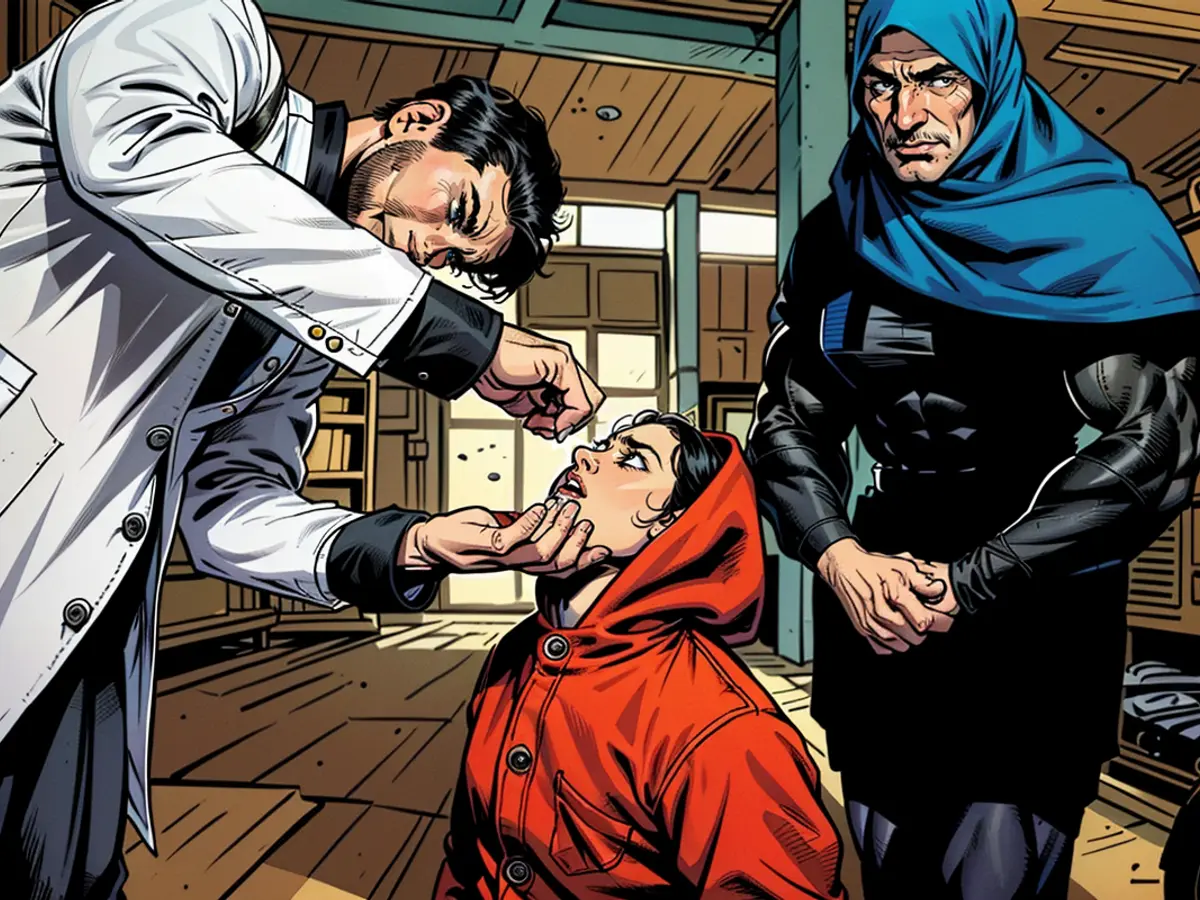After ‘historic backslide’ during pandemic, global childhood immunization rates stall, new data shows
The pandemic signified a “historic backslide,” according to Dr. Katherine O’Brien, director of the Department of Immunization, Vaccines and Biological at WHO. Now, she says, the race is on to reach children who missed shots during the pandemic and to restore and strengthen immunization services beyond pre-pandemic levels.
WHO and UNICEF’s 2023 immunization coverage report, released Sunday, is the world’s largest dataset on immunization trends for vaccinations against 14 diseases. It analyzed estimates from 185 countries and used a third dose of the diphtheria, tetanus and pertussis (DTP3) vaccine — which is recommended for 1-year-olds — as the global marker for immunization coverage.
The data revealed that previous progress in reaching pre-pandemic immunization levels has stalled. Worldwide DTP3 coverage was 84% in 2023, the same as in 2022 but below 86% recorded in 2019. The report’s authors say this is a derailment on the trajectory toward the Immunization Agenda 2030 goal of 90% coverage for essential childhood and adolescent vaccines.
This stagnation reflects ongoing challenges with disruptions in health-care services, logistical challenges, vaccine hesitancy and inequities in access to services, the organizations said in a news release.
The new report also showed that the number of children who had not received a single dose of DTP3 increased by 600,000 from 2022 to 2023, leaving 2.7 million more children un- and under-immunized than before the pandemic.
“Today’s release highlights that we are off track and need to accelerate efforts to meet this challenge,” said Dr. Ephrem T. Lemango, associate director for health and global chief of immunization at UNICEF.
Bright spots around the globe
Amid the overall challenge, however, “there are places where there are positive signs,” Lemango told CNN.
The data showed that the African region made the most progress last year in overall coverage, and countries such as Bangladesh, Indonesia, Brazil and Nigeria made notable strides in recovering post-pandemic, according to O’Brien and Lemango.
“Low-income countries ... where the health systems were hit the hardest by the pandemic ... are starting to see some improvement compared with 2022,” O’Brien said at a news briefing.
In Africa, vaccine coverage in the first year of life increased despite a rising number of births, which required more vaccinations to maintain the same coverage level, according to O’Brien.
The 2023 report also found HPV vaccine coverage in girls increased 7%, returning to near pre-pandemic levels. Studies have shown that the vaccine can reduce cervical cancer rates in women by 87%.
However, current coverage remains well below the 90% target to eliminate cervical cancer as a public health problem, reaching only 56% of adolescent girls in high-income countries and 23% in low- and middle-income countries, according to the news release.
All eyes on measles
WHO estimates that global immunization efforts have saved 154 million lives — 6 lives every minute — over the past 50 years. About 60% of that can be attributed to the measles vaccine, the organization says, projecting it to be the “top contributor to preventing deaths in the future.”
But the 2023 data revealed that measles coverage in countries with large or disruptive outbreaks after the pandemic is too low to control further outbreaks. Nearly 35 million children were left with no or only partial protection, a decline the report called “concerning,” even for countries that have not had outbreaks in the past five years.

Low vaccination coverage was a major factor in outbreaks in 103 countries – accounting for roughly three-quarters of the world’s infant population – in the past five years, said the report.
Cases of the highly contagious virus have also reemerged in the United States. In 2023, the 92% of US children that have been vaccinated against measles, mumps and rubella by age 2 fell below the federal target of 95%, according to a report from the US Centers for Disease Control and Prevention that year.
“Measles outbreaks continue to rise as measles vaccination coverage stalls,” Lemango said. “The world saw over 300,000 confirmed measles cases in 2023, which is an almost threefold increase compared to what we had in 2022.”
According to the organizations, there is hope that the introduction of new and underutilized vaccines, through partnerships such as Gavi, the Vaccine Alliance, will expand protection against infectious diseases like measles.
“This progress is crucial in reducing the burden of diseases that have long plagued communities,” Lemango added.
Immunizations in conflict zones
Over half of unvaccinated children in 2023 lived in countries experiencing fragility, conflict and vulnerability, the data shows, even though these places account for only 28% of new births worldwide. Many of these countries have had “worrying declines in performance since 2019,” the report says.
Of children who did not receive any vaccines in 2023, 59% were in only 10 countries. Places such as Sudan, Yemen and Afghanistan are new to this list, the report says.
“The protection of children in any conflict setting is of critical importance,” WHO’s O’Brien said. “[Conflict] creates an environment where infectious diseases have a big risk of causing large and impactful outbreaks.”
Some countries that experienced conflict, such as Ukraine, had initial dips in immunization coverage but did not see an overall drop in vaccinations. But in other areas, such as Sudan and parts of the Middle East, that wasn’t the case.
There was a “significant reduction” in vaccine coverage in Gaza in 2023, one not seen to the same extent in Israel, according to O’Brien. Data in the report from Gaza was submitted for only January through September, and it “doesn’t cover what is happening in 2024,” Lemango noted.
Analyzing immunization coverage in other areas of conflict is “a mixed picture,” O’Brien said.
“I’ll give the example, however, of Ukraine, which has had an improvement in coverage. Not all conflict areas result in a reduction in coverage,” she said, referencing resilient programs, the nature of conflict and the safety of health workers.
According to Lemango, there is a “clear pattern” in Ukraine where service availability typically decreases at the beginning of a conflict and resumes once assistance and resources flow in. The issue, he said, is how to maintain this improved state.
Global reach of local vaccines
Vaccine coverage in the United States ranges between 95% and 98%, an indication of good availability of health services, according to Lemango. However, that doesn’t mean Americans are entirely protected.
“Until everyone or every country has the ability and the reach for every child to be vaccinated, the vulnerability to have outbreaks, epidemics and potentially pandemics is always imminent,” he said.
Get CNN Health's weekly newsletter
Sign up here to get The Results Are In with Dr. Sanjay Gupta every Tuesday from the CNN Health team.
In April 2023, WHO and UNICEF partnered with organizations such as Gavi, the Vaccine Alliance and the Bill & Melinda Gates Foundation to launch The Big Catch Up initiative in response to declining levels of vaccine coverage after the pandemic.
The effort aims to boost childhood immunizations and fill gaps between pre- and post-pandemic work, according to the partnership. Achieving these goals and aiming for those outlined in Immunization Agenda 2030 will require collaboration and investment in innovation, according to the IA2030 Partnership Council.
“The future is likely to be a future where we’ll have many vaccines that are able to prevent preventable diseases,” Lemango said.
“Immunization stands as one of humanity’s greatest achievements.”
The data from WHO and UNICEF's 2023 report revealed a stagnation in reaching pre-pandemic immunization levels, with worldwide DTP3 coverage remaining at 84%, the same as in 2022 and below the 86% recorded in 2019. This stagnation is a concern as it derails the trajectory towards the Immunization Agenda 2030 goal of 90% coverage for essential childhood vaccines.
To address this issue, it's crucial to focus on improving health services, overcoming logistical challenges, addressing vaccine hesitancy, and reducing inequities in vaccine access. Improving health services can help restore and strengthen immunization services beyond pre-pandemic levels, ensuring the health and well-being of children globally.








